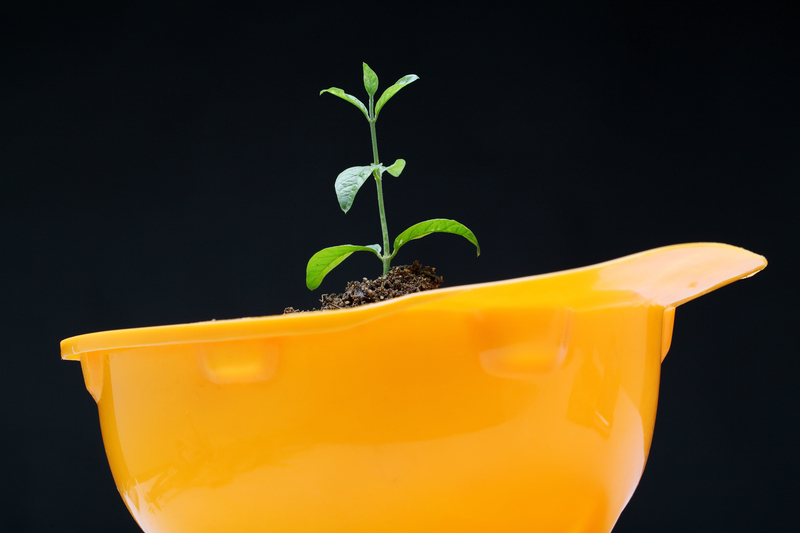A Beginner's Guide to Recycling Pots and Pans Responsibly
Ever wondered what to do with your old, battered cookware? Most pots and pans end up in landfills, but with a little knowledge, you can recycle, repurpose, or even donate them. This comprehensive guide will walk you through how to recycle pots and pans in an eco-friendly way and help you understand why responsible disposal matters now more than ever.
Why Recycling Pots and Pans Responsibly Is Important
Modern kitchens witness a regular turnover of cookware as we update, upgrade, or replace worn-out items. While it's tempting to simply throw out your old pots and pans, doing so contributes to growing landfill problems. Many cookware items are made of metal, non-stick coatings, or contain plastic elements, all of which can have negative environmental impacts if not disposed of correctly.
- Reduces landfill waste: Keeping metal cookware out of landfills conserves valuable space and resources.
- Recovers valuable materials: Many pots and pans are made from recyclable metals such as aluminum or stainless steel.
- Prevents environmental harm: Proper recycling prevents toxic substances leaching into soil and water supplies.
- Supports the circular economy: By recycling cookware, you help create a sustainable journey for materials and resources.
Key Materials Found in Pots and Pans
- Aluminum - Lightweight, rust-resistant, and one of the most commonly recycled metals.
- Stainless Steel - Durable, strong, and valuable in scrap metal recycling programs.
- Copper - Highly conductive and always in demand in the recycling industry.
- Cast Iron - Heavy but highly reusable or recyclable steel alloy.
- Non-Stick Coatings - Include Teflon or ceramic, which may complicate the recycling process if not properly separated from the metal base.

How to Prepare Your Old Pots and Pans for Recycling
Before recycling, it's important to prepare your pots and pans properly to ensure they're accepted by recycling facilities. Follow these steps:
- Clean Thoroughly: Wash your cookware to remove grease, food residue, and debris. Most recycling centers prefer clean items.
- Remove Non-Metal Attachments: Detach any plastic handles, rubber grips, lids, or glass tops. These materials generally need to be disposed of or recycled separately.
- Check for Recycling Symbols: Examine your pots and pans for any recycling marks or instructions. Some brands include disposal guidance.
- Separate by Material: Group similar materials together. For example, keep aluminum pans separate from cast iron or copper pans.
Where to Recycle Pots and Pans
1. Local Scrap Metal Yards
Scrap metal recyclers are one of the best options for responsible recycling of pots and pans. Metal recycling centers accept stainless steel, copper, aluminum, and cast iron. Here's how:
- Contact ahead to ask about their requirements for cookware.
- Bring your pre-sorted and clean pots and pans and ask for instructions on separating materials.
- Ask about compensation: Some scrap yards pay for metals by the pound.
2. Municipal Recycling Programs
Some city curbside recycling programs accept cookware. However, acceptance varies widely. Check with your local solid waste authority for their policy on recycling pots, frying pans, and similar kitchenware.
- Review your city's recycling guide online or contact their information line.
- Avoid tossing cookware in regular single-stream recycling bins unless directed; many curbside programs only accept certain metals or sizes.
3. Manufacturer Take-Back Programs
Some cookware manufacturers offer recycling initiatives for their products. Programs may provide:
- Mail-back recycling: Ship your old items back for responsible disposal or recycling.
- Drop-off at select locations: Some retailers collect used cookware for recycling.
Check your product's brand website for any take-back information, or inquire at the store of purchase.
4. Community Recycling Events
Many towns host special recycling events for hard-to-recycle items like cookware, electronics, or appliances. These events are typically advertised through local news outlets or municipal websites.
- Event schedules are often listed on city or county environmental services pages.
- Some events are free, others charge a nominal fee, especially for larger items or certain materials.
What Not to Do With Old Cookware
Not all disposal methods are environmentally friendly or safe. Here's what to avoid:
- Do not place pots and pans in household trash if it can be avoided. Metals and coatings take centuries to degrade.
- Do not burn cookware. Non-stick coatings can release toxic fumes, and metal fumes can be hazardous.
- Do not mix cookware with regular glass recycling. Glass lids may look recyclable, but must be processed differently due to heat resistance.
Alternative Ways to Reuse Old Pots and Pans
Not all cookware needs to be recycled--many pots and pans can be creatively repurposed! Give your old cookware new life with these ideas:
1. Donate Gently Used Items
If your cookware is still safe and functional, consider donating:
- Charity thrift stores
- Community kitchens or shelters
- Online sharing platforms (such as Freecycle or Buy Nothing)
2. Upcycle as Plant Pots or Garden Containers
Stainless steel or cast iron pots make quirky, durable planters. Add some drainage holes, fill with soil, and grow flowers, herbs, or succulents right on your patio.
3. Use for Storage and Organization
Old pans and bakeware trays can double as garage or workshop organizers for screws, bolts, and nails. Larger pots are handy for storing gardening tools or craft supplies.
4. Create Art or Craft Projects
Transform lids into clocks, frying pans into wall art, or saucepans into whimsical bird baths. Let your imagination run wild and reduce waste while beautifying your home!
Special Considerations: Non-Stick and Coated Cookware
Non-stick pans can present recycling challenges. Here's what to know about responsibly recycling Teflon, ceramic, or enamel-coated cookware:
- Never place coated pans in single-stream recycling. The coatings are not recyclable with regular metals and can contaminate the process.
- Contact your local recycling center. Some facilities will accept non-stick pans as scrap metal if you remove the coating (which can be tricky and may not always be feasible).
- Check with manufacturers. A few brands offer specific guidance for non-stick pans or provide a recycling program for them.
Tip: If the pan is beyond repair and recycling isn't possible, consider alternative reuses as described above.
Common Questions About Recycling Cookware
Can you recycle frying pans and saucepans in regular blue bins?
No, most curbside blue bin recycling programs do not accept cookware because of their size or mixed materials. Pots and pans should be taken to scrap metal recyclers or designated drop-off points.
What if my cookware is rusty or damaged?
Rusty, dented, or broken cookware can usually still be recycled for their metal content, provided they contain minimal non-metal parts.
Are there recycling options for glass lids?
No, most glass lids are made of tempered glass, which is not suitable for regular glass recycling. Instead, check with local recycling events or upcycle them as trays or craft materials.
Quick Checklist: How to Recycle Old Pots and Pans Responsibly
- Clean and prepare your items by removing food debris and any non-metal attachments.
- Sort by material - group stainless steel, aluminum, copper, and cast iron separately.
- Contact local recycling centers or scrap metal yards for acceptance guidelines.
- Research manufacturer take-back or store recycling programs.
- Consider donation or upcycling before recycling - extend the life of functional cookware.
Eco-Friendly Brands and Sustainable Cookware Options
Considering a new cookware purchase? Opt for products from brands with strong environmental reputations:
- Buy from companies that use recycled materials or offer recycling programs.
- Choose cookware with minimal coatings, replaceable parts, and repair guarantees.
- Invest in durable, long-lasting designs to minimize future waste.

Final Thoughts
Recycling and reusing pots and pans responsibly is a simple yet impactful way to reduce your ecological footprint and support a healthier planet. By understanding the best practices for proper cookware disposal, you not only declutter your kitchen but also contribute to a cleaner, more sustainable world.
Always research local rules and use this beginner's guide as your roadmap to responsible pot and pan recycling. The environment will thank you!
Additional Resources
- Earth911 Recycling Locator
- EPA: How Do I Recycle Common Recyclables?
- Recycle Now: Metal Recycling Guide
Let's all do our part: recycle, repurpose, and reduce waste--one pot at a time!
